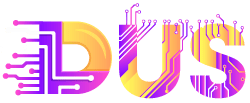“Marketing Live” is Google’s annual virtual event showcasing new products, formats, and tips. This year’s program took place last month, when Google announced over 40 updates to Ads, YouTube, and data measurement, all of which were mostly AI-driven.
I will focus this post on changes to Google Ads within AI Overviews and AI Mode.
AI Overviews, AI Mode
AI Overviews is Google’s generative AI feature that answers queries entirely in search results. Google introduced the feature in 2024. AI Overviews summarizes solutions from across the web and occasionally cites those sources for further research. For example, searching “how to clean an oven” could trigger an AI Overview that includes a list of external sites with bullets, videos, and other formats.
To date, AI Overviews have summarized mostly organic listings. At last month’s Marketing Live, Google announced that Overviews would show more ads. For instance, a “how to clean an oven” search could trigger ads for cleaning products.
AI Mode extends Overviews to anticipate searchers’ intent and likely follow-up questions beyond the initial query. Google refers to these additional responses as “fan-out” results.
Google increasingly generates search results based on users’ intent, not their keywords. AI Overviews and AI Mode follow this trend.
AI for paid search
At Marketing Live, Google execs stated that both Overviews and AI Mode can include ads. Searchers’ intent triggers those ads, not keywords alone. I’ve repeatedly addressed this evolution. Google continues to promote broad match keywords with campaign types that lessen reliance on keywords, viewing such words and phrases as broad themes.
For example, Google’s newly created AI Max for Search campaign type (i) requires only broad match keywords, (ii) generates dynamic ad copy, and (iii) selects an advertiser’s landing page likely to yield the best performance.
Google’s AI aims to answer searchers’ needs. Advertisers can help by providing audience signals such as first-party data and custom segments.
Site content
Engaging, quality website content has always driven conversions. It’s now more important than ever for paid search because Google displays the text in the ads.
A Google Ads setting in most campaign types allows it to automatically create assets based on the content from (i) landing pages, (ii) the site’s domain, and (iii) existing ads.
The setting is optional, but advertisers should opt in to take full advantage of AI.
Most advertisers already focus on organic search optimization and produce quality content. There’s no need to reinvent the wheel.
The presentations at Marketing Live reinforced our understanding that ads in Google are dynamic. Advertisers still need to write compelling copy, but AI will tailor those ads to each user. The stronger the site content, the better the ads.
Source link
[ad_3]
[ad_4]

